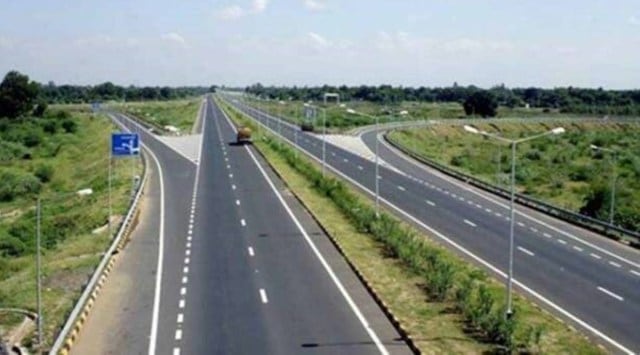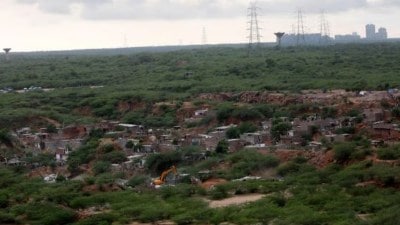New expressways: All main cities of Punjab set to benefit
Undoubtedly, these expressways are expected to alleviate traffic congestion, reduce travel distances, and increase travel speeds.
 These transformative road projects, with their extensive reach and strategic planning, aim to reduce travel distances, increase speed, and even curtail fuel consumption, according to the project report. (Express Photo)
These transformative road projects, with their extensive reach and strategic planning, aim to reduce travel distances, increase speed, and even curtail fuel consumption, according to the project report. (Express Photo) In a bid to decongest cities and enhance connectivity across Punjab, the ambitious Bharatmala Pariyojna (BMP) is making remarkable strides. The development of over 1600 km of expressways, featuring either four or six lanes, is set to revolutionise travel in the state. These transformative road projects, with their extensive reach and strategic planning, aim to reduce travel distances, increase speed, and even curtail fuel consumption, according to the project report.
One of the prestigious projects under BMP is the Amritsar-Bathinda-Jamnagar expressway, spanning an impressive 917 km. This mega project will connect Amritsar, Kapurthala, Moga, and Bathinda within Punjab before stretching across Haryana, touching Sirsa, and further extending its reach to Rajasthan, encompassing Hanumangarh, Sri Ganganagar, Bikaner, Jodhpur, Barner, and Jalor. Finally, it will enter Banas Kantha in Gujarat and traverse Patan, Kutch, Morbi, and Jamnagar. The project’s estimated cost is a staggering 22,767 crores, with several bottlenecks reported at the Bathinda-Sirsa border villages. However, following an increase in compensation awards, protests have been suspended.
Another game-changing endeavor is the Mohali-Sirhind-Khanna bypass-Malerkotla-Barnala expressway, spanning a total of 108 km. This four-lane project, with the potential for future expansion to six lanes, promises to significantly reduce travel distances.
The journey from Mohali to Barnala, currently taking 2.5 hours, will be trimmed to a mere 1.5 hours. Additionally, travel speeds will soar from 60 kmph to 100 kmph, offering a seamless travel experience. Moreover, this expressway aims to connect with the textile cluster of Barnala and key economic centers in Barnala, Khanna, Mohali, and Ludhiana.
Meanwhile, the Malaut-Mandi Dabwali bypass, classified as a greenfield expressway, spans 4.7 km through Bathinda. The entire stretch has been successfully acquired, with 20.72 crores already disbursed out of the total compensation amount of 23.99 crores. In Muktsar district, the town of Malaut is set to witness a 52 km four-lane expressway connecting Malaut-Abohar-Sadhuwali (Rajasthan), with 65 crores of compensation disbursed to farmers, as shared by Dr. Senu Duggal, deputy commissioner of Fazilka.
While some bottlenecks have been reported in Fazilka, the district administration assures their resolution. The issues regarding compensation amounts in Kaller Khera and Abohar rural have been resolved, with only two remaining structures pending acquisition in Balluana. The NHAI work in Balluana is progressing smoothly. In Khuiyan Server, the distribution of compensation awaits the completion of arbitration proceedings, with 1.4 km of the 4.3 km stretch pending acquisition. The Kisan Mazdoor Sangharsh Committee (KMSC) previously staged a month-long dharna at Gurdaspur railway station in protest, demanding a hike in compensation awards for the Amritsar-Una expressway. The district administration has filed appeals to address the concern, awaiting a decision.
Ludhiana is set to witness a transformation beyond the prestigious Delhi-Amritsar-Katra (DAK) expressway. Several additional expressways are planned to pass through Ludhiana, including Ludhiana-Rupnagar package-1, Ludhiana-Rupnagar package-2, Ludhiana-Bathinda, and Ludhiana Southern Bypass. This expansive network of roads aims to decongest the city and shorten travel distances between various cities. The majority of these projects, which commenced in 2022, have a project deadline of three years. Tailored to the specific traffic density of the region, these expressways, along with seven bypasses, will divert traffic away from major cities such as Ludhiana, Amritsar, Jalandhar, Patiala, Malaut, Mandi Dabwali, and Phagwara. Planned as four or six-lane expressways, they will be constructed at an elevated position, 3-4 km above the ground, ensuring uninterrupted traffic flow.
Undoubtedly, these expressways are expected to alleviate traffic congestion, reduce travel distances, and increase travel speeds. However, it is important to note that toll taxes will be imposed on these new projects, and how they impact the pocket of a commuter remains to be seen.







